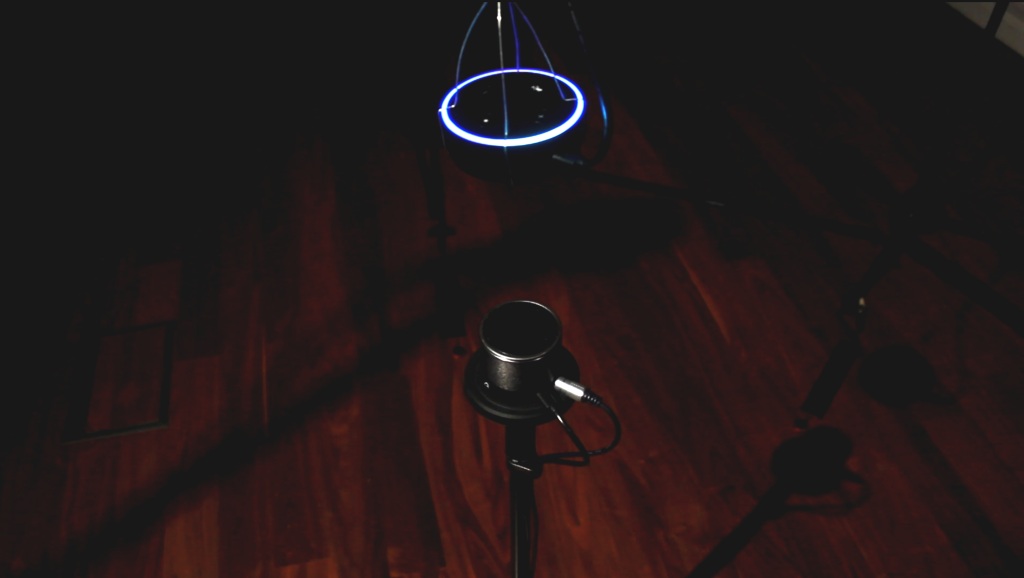The Dark Age of Connectionism
The Dark Age of Connectionism explores the hidden capacities of always-listening devices such as the Amazon Echo, and the capacities we have to unravel the massive systems which these devices rely upon.
The near-field microphone array built into the Amazon Echo captures not only what is being said to it, but also the approximate position of the speaker in the room, and what music is playing nearby. With the right data analytics, this system could also discern whether there are footsteps in the room, what type of devices are being listened to nearby, or even whether voices are being raised in anger. We know these sounds are being heard by these devices – but due to the secretive nature of Amazon’s operation, we cannot know whether these or any other discrete analytics are being performed on the sonic data being constantly poured into these always-listening machines.
The Dark Age of Connectionism inverts the hidden nature of this always-listening, and offers multiple ways to critique how devices like this function. The microphones surrounding the Echo are capturing nearby sonic data – surrounding voices, noises from phones, and other sounds. Each sound generates a question spoken to the Echo through a version of Apple’s Siri voice assistant – itself a product of US military research. Each question attempts to create a deeper understanding of the politics and function of the Echo, or echoes the anxieties of living amongst these devices. This builds an ongoing discourse of investigation into this complex yet deceptively discrete machine. To hear these questions and their answers, audience members must devise ways of being present around the device which do not create more sonic data for it, exploring how such objects in our homes may influence our behaviour if we wish to avoid their listening.

